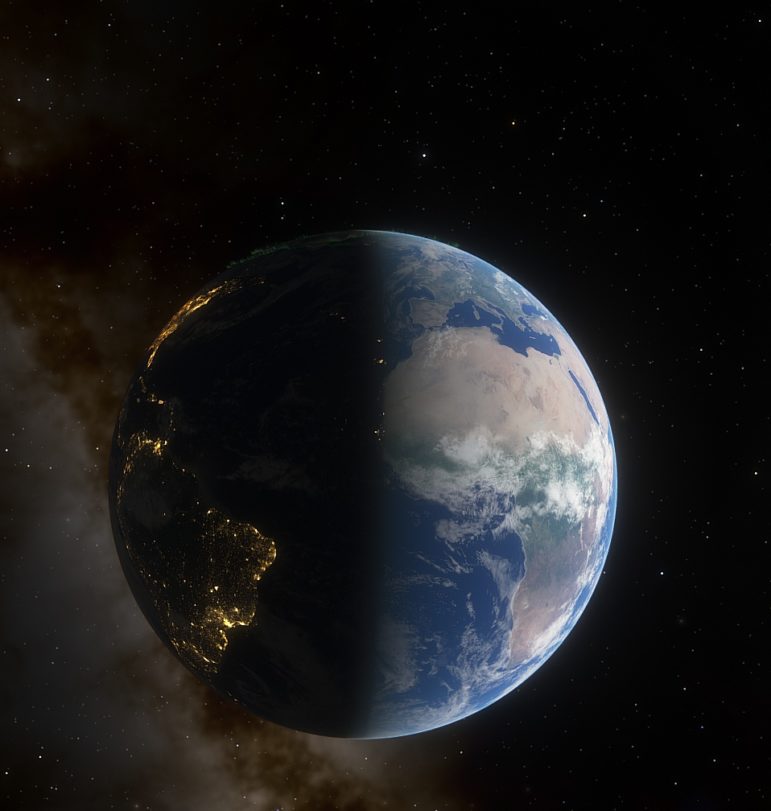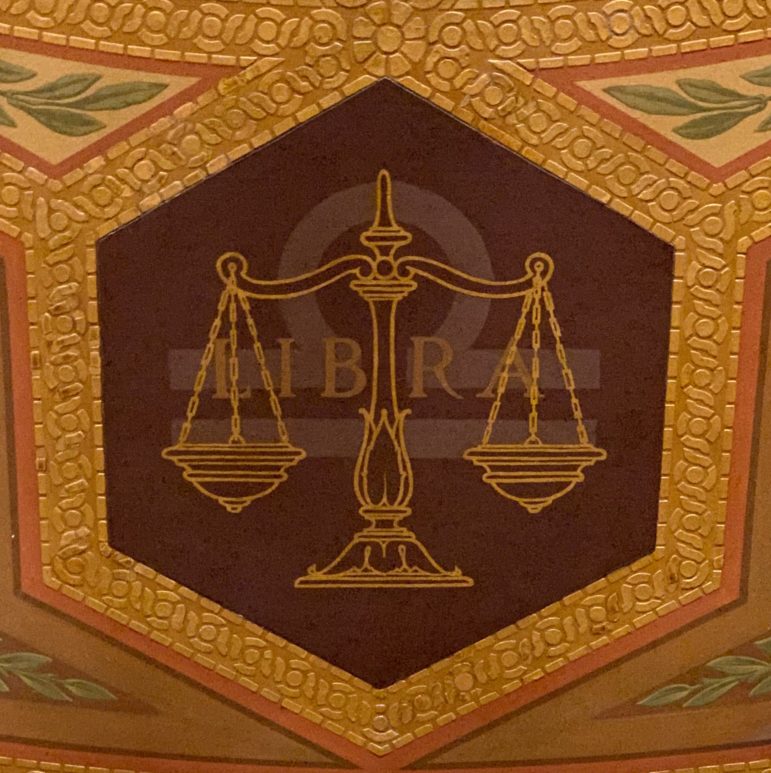TWH – Happy Equinox! This year, the September Equinox will arrive at 9:03 pm (EDT) today, Thursday, September 22. For countries in Europe and those farther east, the equinox will occur on Friday, September 23. In the Southern Hemisphere, it marks the vernal equinox and the autumnal equinox in the Northern hemisphere.

Earth daylight distribution on the September Equinox (Northern Autumn; Southern Spring) – Image credit: Wikihelp7586 – CC BY-SA 4.0
The equinoxes occur when the Earth’s axis is perpendicular to the Sun’s rays. The Sun’s rays enter along the “celestial equator” which is the equatorial circle of the imaginary celestial sphere that occurs on the same plane as Earth’s equator.
Because of the Earth’s tilt at about 23.44 degrees, the planet will experience equal hours of day and night. From today, the Northern Hemisphere will experience shorter days and the Southern Hemisphere will experience longer days.
The equinoxes mark more the wane of the previous season than the beginning of the coming one. The North will soon see longer nights. As an Irish proverb reportedly says, “Autumn days come quickly, like the running of a hound on the moor.”
But the Southern Hemisphere will see longer days, more flowers, and the growing light and warmth of summer. Our friends and family living in the Southern Hemisphere begin the journey toward summer. For them, the days will begin to lengthen and become warmer as light triumphs over dark, and the Earth reawakens from its winter slumber.
Beginning today or tomorrow depending on location, the Sun will enter Libra in the traditional Zodiac (the sidereal zodiac, the sun’s transit to Libra occurs much later, usually after October 31). Libra is the only zodiac sign represented by an object, the scales. They represent justice and are held by the Greek Titaness, Themis, the personification of divine order, fairness, custom, and law. Libra is also the cardinal sign of air, sharing that element with Aquarius and Gemini.

Image credit: AnotherGypsy – CC BY-SA 4.0
In the Northern Hemisphere, the full moon closest to the September Equinox is called the Harvest Moon. It rose nearly two weeks ago in the constellation of Aquarius, on the evening of Friday, September 9, and was accompanied by Saturn in Capricorn and Jupiter in Pisces.
The next full moon, the Hunter’s Moon, will rise on October 8th this year at 4:55 pm (EDT).
Outside of religious life, the Fall of the North season is well celebrated. It is punctuated by harvest celebrations, craft and arts festivals, outdoor sports, pumpkin picking, scarecrow contests, corn mazes, and the aromas of spice and apple cider.
Pumpkin spice has already been unleashed on an unsuspecting world a few weeks ago. Pictures of early colored leaves sailed through Facebook posts accompanied by anticipation and trepidation.
Famed French author Albert Camus said, “Autumn is a second spring when every leaf is a flower.”
Many Asian cultures and overseas Chinese communities celebrate the Mid-Autumn Festival beginning on the full moon falling on the 15th day of the 8th month of the Chinese lunisolar calendar. The festival is based on the legend of Chang’e (嫦娥), the moon goddess. Open-air altars are built for her and delicious mooncake pastries are made as part of her veneration.
From ancient to modern cultures, the harvest period was a time of both work and celebration. Many of these celebrations are marked by thanksgiving, whether religious or secular in nature. Gratitude is given to deities, ancestors, family, friends, community, self, and nature.
In some modern Pagan traditions, the autumnal equinox is the second of three harvest festivals, with the first being Lughnasadh, and the third being Samhain.
The Pagan holiday, or Sabbat in some traditions, occurring at the September Equinox in the Northern Hemisphere is known by a variety of names. For Wiccans and Witches, it is often called “Harvest Home” or “Mabon.” In Druidic and Celtic-oriented Pagan groups, it can be called “Mid-Harvest,” “Foghar,” or “Alban Elfed.” In modern Asatru, it is sometimes called “Winter Finding.” The Greek term for it (using Latin letters) is “Phthinopohriní Isimæría.” In Old English, it was called “efnniht.”
Some just call it “Fall.”

Image credit: Sergio Cerrato – Italia from Pixabay
Whether you are celebrating the Ostara, Mabon, spring, or fall, may your blessings be abundant this equinox.
The Wild Hunt is not responsible for links to external content.
To join a conversation on this post:
Visit our The Wild Hunt subreddit! Point your favorite browser to https://www.reddit.com/r/The_Wild_Hunt_News/, then click “JOIN”. Make sure to click the bell, too, to be notified of new articles posted to our subreddit.